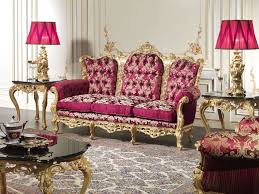
History of horsehair use in furniture

The use of horsehair in furniture dates back several centuries, evolving through different periods and styles. Here's a detailed look at the history of horsehair use in furniture:
Early Uses and Origins
Ancient Times: Horsehair has been used since ancient times, though its exact origins in furniture making are hard to pinpoint. Early civilizations may have used horsehair for its durability and resilience in various applications, including primitive bedding and seating.
17th and 18th Centuries
Baroque and Rococo Periods: During the 17th and 18th centuries, particularly in the Baroque and Rococo periods, horsehair began to be used more frequently in high-quality furniture. Upholsterers valued horsehair for its strength and elasticity, making it ideal for stuffing cushions and seats that required durable support.
Colonial America: In Colonial America, horsehair was a popular material for stuffing upholstered furniture. Its availability and superior qualities made it a preferred choice for the seats and backs of chairs, sofas, and carriage seats.
19th Century
Victorian Era: The Victorian era saw a significant increase in the use of horsehair in upholstery. As furniture designs became more elaborate and comfort-oriented, horsehair was prized for its ability to retain shape and provide firm support. It was commonly used in the stuffing of sofas, chairs, and mattresses.
Mass Production: The industrial revolution allowed for mass production of furniture, and horsehair continued to be a favored stuffing material due to its durability and natural properties. It was often mixed with other materials like cotton and wool to achieve desired levels of firmness and comfort.
20th Century
Early 20th Century: In the early 20th century, horsehair continued to be used in high-end furniture. However, the introduction of new synthetic materials like foam and latex began to offer cheaper alternatives. Despite this, horsehair remained popular in luxury and bespoke furniture for its superior qualities.
Mid to Late 20th Century: The mid-20th century saw a decline in the use of horsehair as synthetic materials became more dominant in the furniture industry. However, horsehair maintained a niche market among artisans and in high-end, custom-made furniture.
Contemporary Use
Modern Day: Today, horsehair is still used in the production of luxury and high-end furniture. It is particularly favored by traditional upholsterers and bespoke furniture makers who appreciate its natural properties and the craftsmanship involved in working with it.
Sustainability and Eco-friendliness: In recent years, the sustainability movement has renewed interest in natural materials, including horsehair. Its eco-friendly qualities make it an attractive option for those looking to reduce their environmental impact while still enjoying high-quality furniture.
Cultural and Regional Variations
European Tradition: In Europe, especially in countries like France and England, horsehair has a long tradition of use in furniture making. Classic French and English furniture often incorporated horsehair stuffing, contributing to the pieces' longevity and comfort.
Scandinavian Influence: Scandinavian furniture design, known for its emphasis on natural materials and functional aesthetics, has also embraced horsehair, particularly in artisanal and bespoke pieces.
Summary
The history of horsehair in furniture is marked by its enduring qualities of strength, elasticity, and durability. Despite the advent of synthetic alternatives, horsehair has maintained a presence in the furniture industry, particularly in high-end, custom, and eco-conscious markets. Its legacy continues to be appreciated by those who value traditional craftsmanship and natural materials.



